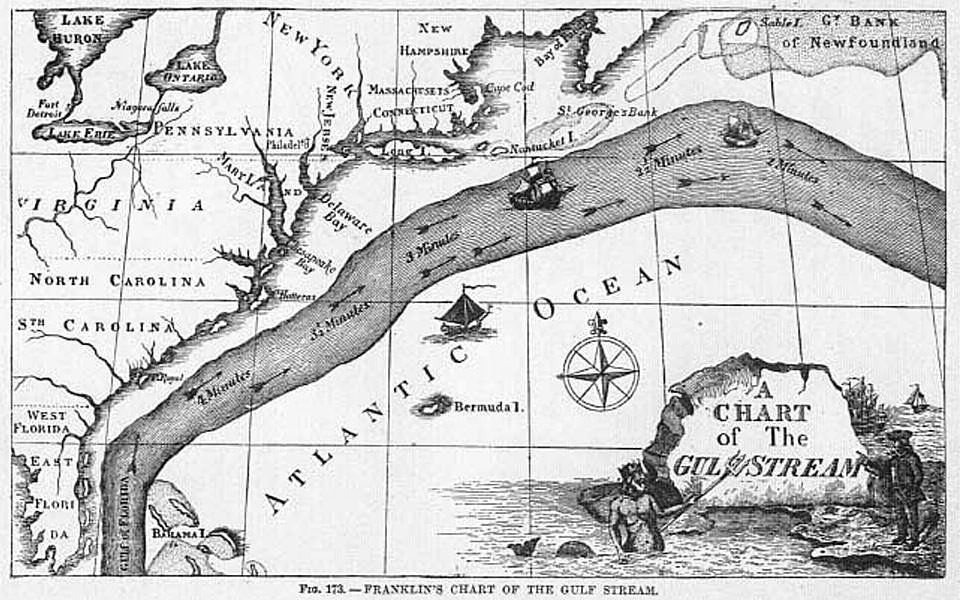Who first charted the Gulf Stream?
Benjamin Franklin was the first person to chart the Gulf Stream.

Alexander Agassiz, a preeminent oceanographer of the 19th century, attributed the first scientific basis for exploring the Gulf Stream to American statesman Benjamin Franklin. Franklin published this map of the Gulf Stream in 1769, 200 years before a submersible named after him drifted below the surface to study this river in the ocean.
Although first observed in 1513 by Ponce de Leon, the Gulf Stream was not charted until the early 1770s by Benjamin Franklin.
In 1843, the United States Coast Survey, NOAA’s earliest “ancestor,” set out to study the Gulf Stream in more detail. They wanted to determine the depth of the water, the temperature of the water at different depths, the characteristics of the ocean bottom, the direction and velocity of the currents at different depths, and the extent of plant and animal life. Their early observations led them to discover features such as cool and warm water banding, as well as the “Charleston Bump.”
Search Our Facts
Get Social
More Information
Last updated: 06/16/24
Author: NOAA
How to cite this article